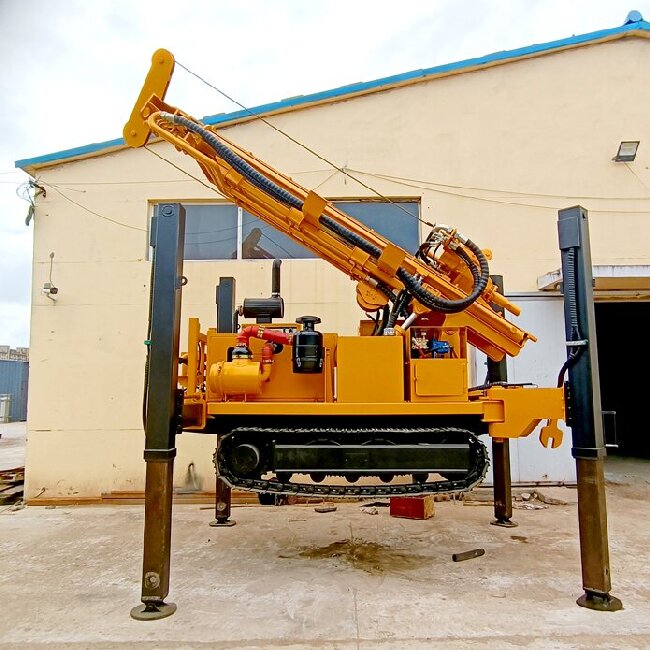Preparation
Inspect the equipment: Carefully inspect all parts of the drilling rig, including the engine, transmission system, drill pipe, drill bit, hydraulic system, etc., to ensure that there is no damage, looseness or oil leakage. Check whether the lubricant level is within the specified range.Selection of drill bit: Select the appropriate drill bit according to the hardness of the formation, drilling diameter and other factors. Generally speaking, it is preferable to use cemented carbide drill bits for hard strata and diamond drill bits for soft strata.
Prepare drill pipes: Connect the drill pipes according to the required length and tighten the joints with special tools to ensure a firm connection.
Select the site: Choose a flat and solid ground as the drilling location, and make sure there are no obstacles around.
Installation of the drilling rig
Fix the base: Fix the base of the drilling rig firmly on the ground, either by using expansion bolts or foot bolts.
Install the drill pipe: Install the connected drill pipe to the drilling rig, make sure the centerline of the drill pipe is the same as the centerline of the drilling rig.
Connect the power source: Connect the power source (e.g. diesel engine, electric motor, etc.) and check whether the line is smooth.
Connect the hydraulic system: Check whether the hydraulic oil pipeline is well connected and whether the hydraulic oil level is normal.
Start drilling
Start the engine: Start the engine according to the operating procedures, and wait until the engine runs stably before drilling.
Lower the drilling tools: Slowly lower the drilling tools to ensure that the drill bit is aligned with the center of the wellhead.
Start drilling: Gradually increase the drilling pressure and speed and start drilling.
Adjust pressure and speed: Adjust pressure and speed according to the formation conditions. Generally speaking, it is better to use higher drilling pressure and lower speed in hard formations and vice versa in soft formations.
Circulate mud: If a mud circulation system is used, start the mud pump to keep the mud circulating in the borehole to cool the drill bit,
Completing the Drill Hole
Reach Design Depth: Stop drilling when the hole reaches the design depth.
Lift the drilling tools: Slowly lift the drilling tools and rinse the drill pipe with clean water.
Clean up the site: Clean up the drilling site, organize the equipment, and perform simple maintenance.
Safety Precautions
Prohibit uninvolved persons from approaching the drilling rig during drilling operations.
Regular inspection of equipment: Inspect all parts of the equipment regularly and perform maintenance in a timely manner.
Pay attention to the safety of electricity: If you use an electrically driven drilling rig, you must pay attention to the safety of electricity to prevent electric shock.
Prevent Mechanical Injuries: Pay attention to your hands and feet when operating the rig to prevent them from being pinched by mechanical parts.
Pay attention to dust and noise prevention: Drilling operations will generate a lot of dust and noise, and should be well protected.

If you need to buy the right water well drilling rig, click the link below to contact our professional team.
Contact us
Comments
Post a Comment